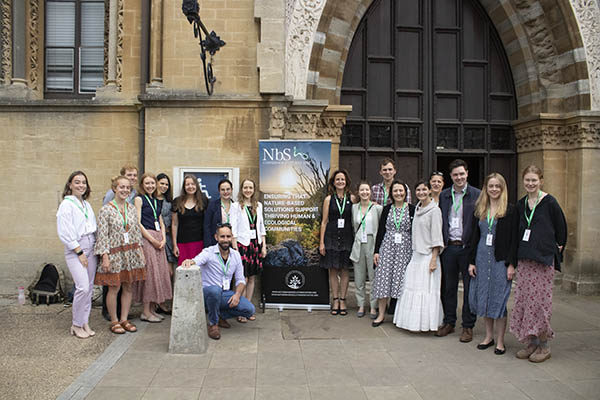NbS Conference 2022 – Day two summary

Today marked the second day of the Nature-based Solutions in Oxford, with parallel sessions running in the afternoon in the Oxford Martin School, and the Natural History Museum. We heard from a range of speakers across a range of different contexts across continents, both in-person, and online, including Indigenous and local community representatives. The focus was on the critical role of Indigenous Peoples and communities in delivering NbS and the importance of inclusive governance. Next we reflected on how NbS can ensure positive outcomes for people and nature, and climate. We discussed what obstacles can hinder this by drawing on cases where NbS did not deliver on these outcomes. And finally how to ensure that finance flows to where it matters, for people and nature.

Session 4 highlighted concerns around the influence of western value systems and world-views on how nature-based solutions are conceptualized and operationalized, particularly around the overarching dominance in narratives of market-based mechanisms. Although safeguards for people and nature are critical, there was a concern on the extent to which safeguards actually materialize on the ground. Critically important is the need to ensure that NbS are designed and operationalized through rights based approach, and in a way that respects a plurality of world views, beyond a narrow economic valuation lens. To that end technical and financial resources are crucial to ensure that participatory approaches which focus on equity, and harnessing a plurality of knowledges (in relation to what is needed, what to value, what to measure) materialize on the ground.
Session 5a highlighted that although there are significant potential synergies (e.g. biodiversity & climate mitigation), there is a need to recognize and manage potential for trade-offs between biodiversity, climate, and social outcomes. This requires requires a landscape approach, through holistic planning and proactive measures. Advances in monitoring impacts on biodiversity from NbS (eDNA) are rapidly emerging. Measures of ecosystem health should incorporate broad taxonomic coverage, and must incorporate IPLC knowledge to empower local communities in monitoring, and evaluating NbS outcomes.
But delivering effective NbS means governing NbS right, as explored in session 5b. That requires accounting for the various dimensions of equity: recognitional, distributional, procedural. Getting equity right requires first recognizing the importance of, and recognizing the presence of multiple values of nature. Second, it requires equitable decision-making processes where such decision-making processes are themselves designed through participatory approaches. And third, equity needs to be considered across all NbS stages (design, implementation, as well as monitoring and evaluation) It is also
Session 6a emphasized the critical need to address root causes of land and biodiversity degradation, NbS is no one silver bullet. The structural drivers of degradation are deeply complex and political. There are also important risks to NbS effectiveness due to climate change impacts in the future. This highlighted the necessity that when it comes to offsets, it is critical to apply the mitigation hierarchy – the science is clear that NbS are no substitute to decarbonization (nbsguidelines.info). Importantly, businesses, including those dependent on agricultural commodity supply chains, should implement an insetting strategy – this means ‘investing in activities that provide measurable reductions in climate impact, supporting biodiversity, and generating benefits for local communities along the supply chain’.
Finally session 6b discussed the fact that much more finance is needed to address the biodiversity funding gap (~600-800 billion US$/year; although some estimates place it at 1 trillion US$/year). Work is underway to explore the extent of risk this poses to the financial sector. Two key barriers currently are 1) the lack of investor risk appetite to invest in NbS, and 2) the lack of regulation and policy, which are critical to shore-up private sector confidence in NbS investment. In the short term, blended modes of finance (public-private) can help catalyze private sector investments towards NbS. Jurisdictional approaches to REDD+ may hold potential to generate creating carbon credits at scale, verifying them, while ensuring social safeguards. It is also crucial to ensure that finance from MDBs works in synergy with private sector investments, rather than in competition. Payments for ecosystem services should be applied more broadly, beyond carbon, to generate high value, resilient NbS, while ensuring equitable distribution to local communities. This requires ensuring IPLC have the agency to manage and access funds. Lastly, much work needs to be done to deliberate on what ‘good’ looks like, both in terms of outcomes, as well as the process of NbS implementation and financing.




